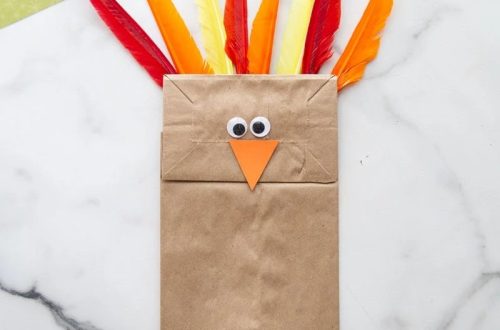Part 1: Interactive and Educational Toys
The demand for trending toys 2024 continues to grow as parents seek toys that can provide both entertainment and learning opportunities for their children. As a result, toymakers are focusing on creating toys that are not only fun to play with but also help children develop crucial skills.
1. STEM Toys:
One of the most significant trends in the toy industry is the rise of STEM (Science, Technology, Engineering, and Mathematics) toys. These toys are designed to introduce children to these essential fields in an engaging and hands-on way. From building blocks that incorporate basic engineering principles to coding games that teach kids the fundamentals of computer programming, STEM toys are becoming increasingly popular among parents who want to nurture their children’s interest in these subjects from a young age.
2. Interactive Learning Devices:
Another emerging trend in the world of educational toys is the development of interactive learning devices. These devices often combine traditional play with technology to create an immersive and engaging learning experience for children. For example, interactive storybooks with touch-sensitive pages and voice-activated toys that respond to children’s questions are becoming more prevalent in the market, offering a new level of interactivity and engagement in playtime.

Part 2: Eco-Friendly and Sustainable Toys
In recent years, there has been a growing awareness of environmental issues, leading to an increased demand for eco-friendly and sustainable products across various industries, including the toy market. With this shift in consumer preferences, toymakers are increasingly focusing on creating toys that are not only safe and engaging but also environmentally conscious.
1. Recycled Materials:
In recent years, there has been a significant shift in the toy industry towards incorporating sustainable materials into the manufacturing process. Toymakers are now actively seeking out ways to utilize recycled materials such as ocean waste plastics, discarded textiles, and reclaimed plastic to create their products. This move towards sustainable practices is not only aimed at reducing the environmental impact of toy production but also serves as a powerful educational tool, instilling the message of sustainability and environmental consciousness in younger generations.
One impactful way in which toymakers are incorporating recycled materials into their products is through the production of plush toys made from recycled fabrics. By repurposing discarded textiles, such as clothing or upholstery, into soft and cuddly plush toys, toymakers are not only preventing these materials from ending up in landfills but are also reducing the need for virgin materials. This can have a significant positive impact on reducing the overall carbon footprint of toy production.
Similarly, building sets and other toys crafted from reclaimed plastic are becoming increasingly popular. By collecting and reprocessing plastic waste, including items such as discarded packaging, bottles, and other single-use plastics, toymakers are able to create durable and engaging toys that have a second life. This not only diverts plastic from ending up in the oceans or landfills but also helps raise awareness about the importance of recycling and waste reduction.
2. Biodegradable and Non-toxic Toys:
In addition to using recycled materials, toymakers are also exploring the use of biodegradable and non-toxic materials in their products. This ensures that when these toys reach the end of their lifecycle, they have a minimal impact on the environment. Furthermore, the shift towards non-toxic materials is crucial for children’s safety, as they are more likely to put toys in their mouths and come into direct contact with them during play.
Part 3: Augmented Reality and Interactive Play Experiences
With advancements in technology, toymakers are incorporating augmented reality (AR) and other interactive features to create a more immersive and engaging play experience for children. These innovative toys blur the lines between the physical and digital worlds, offering a new level of interactivity and excitement.

1. AR-Enabled Toys:
Augmented reality-enabled toys have revolutionized playtime by employing technology to overlay digital elements onto the real world, offering a unique and interactive play experience for children. These toys typically include a corresponding app that allows kids to engage with virtual characters and environments using their smartphones or tablets. Whether it’s a puzzle game that is brought to life with immersive 3D animations or a storytelling toy that transports children to captivating virtual worlds, AR-enabled toys blend the physical and digital realms, offering a dynamic and innovative play experience that captivates children’s imagination and creativity. Through these toys, children can explore and engage with a new dimension of play that seamlessly integrates technology with traditional toy concepts, expanding their imaginative and interactive play opportunities.
2. Interactive Playsets:
Toymakers are also developing playsets that incorporate interactive technology to enhance imaginative play. These playsets may feature sensors, sound effects, or light-up elements that respond to children’s actions, creating a dynamic and immersive play environment. For example, a dollhouse with interactive furniture that lights up and plays sounds when moved or a spaceship playset that makes realistic engine noises when manipulated are just a few examples of how toymakers are blending technology with traditional play.
Part 4: Inclusive and Diverse Representation in Toys
The push for more inclusive and diverse representation in toys has gained momentum in recent years, as parents and advocates highlight the importance of promoting diversity and equality through play. Toymakers are responding to this demand by creating toys that reflect a wide range of cultures, abilities, and identities, fostering a more inclusive and representative play experience for all children.

1. Dolls and Action Figures:
As the demand for more inclusive and diverse toys grows, toymakers are responding by creating dolls and action figures that represent a wider range of cultures, ethnicities, and body types. This shift towards diversity and inclusion is significant not only for the representation it offers children but also for the wider impact it can have on society.
By including diverse characters in their toy lines, companies are providing children with the opportunity to see themselves and their experiences reflected in their playthings. This representation can be incredibly empowering for children who may have previously felt underrepresented or marginalized in the toy market. It also allows children from different backgrounds to better understand and appreciate the diversity of the world around them, fostering empathy and understanding.
In addition to providing representation, inclusive and diverse toys can also help challenge harmful stereotypes and promote equality. By offering a range of dolls and action figures that accurately depict various cultures, ethnicities, and body types, toymakers are helping to break down narrow and often unrealistic standards of beauty and identity. This can have a profound impact on a child’s self-esteem and self-image, as well as their perception of others.
Furthermore, the impact of inclusive toys extends beyond individual children and can contribute to a more inclusive and empathetic society as a whole. By normalizing diversity in toys, children are exposed to a broader range of experiences and are encouraged to celebrate differences rather than fear or discriminate against them.
2. Adaptive and Accessible Toys:
Another important trend in the toy industry is the development of adaptive and accessible toys designed for children with disabilities. These toys may feature adjustable elements, sensory-friendly materials, or inclusive design features that cater to a wide range of abilities. By creating toys that are accessible to all children, toymakers are helping to create a more inclusive and supportive play environment for children with disabilities, promoting a sense of belonging and empowerment.





